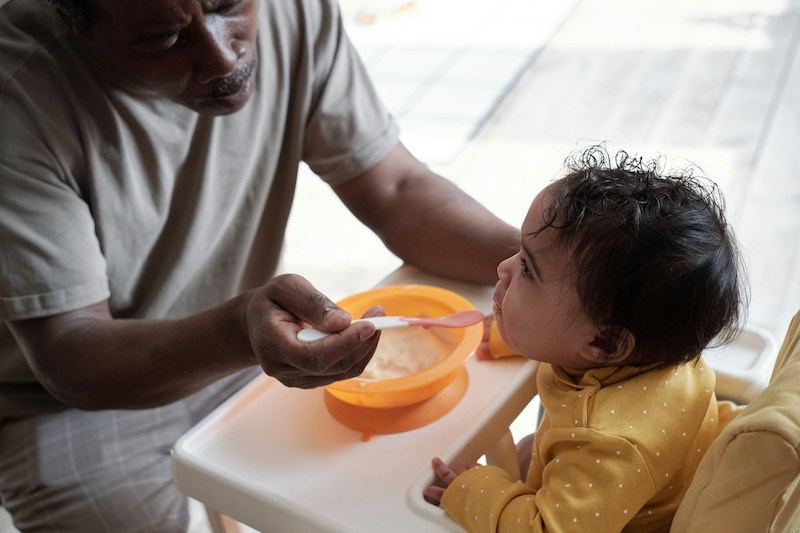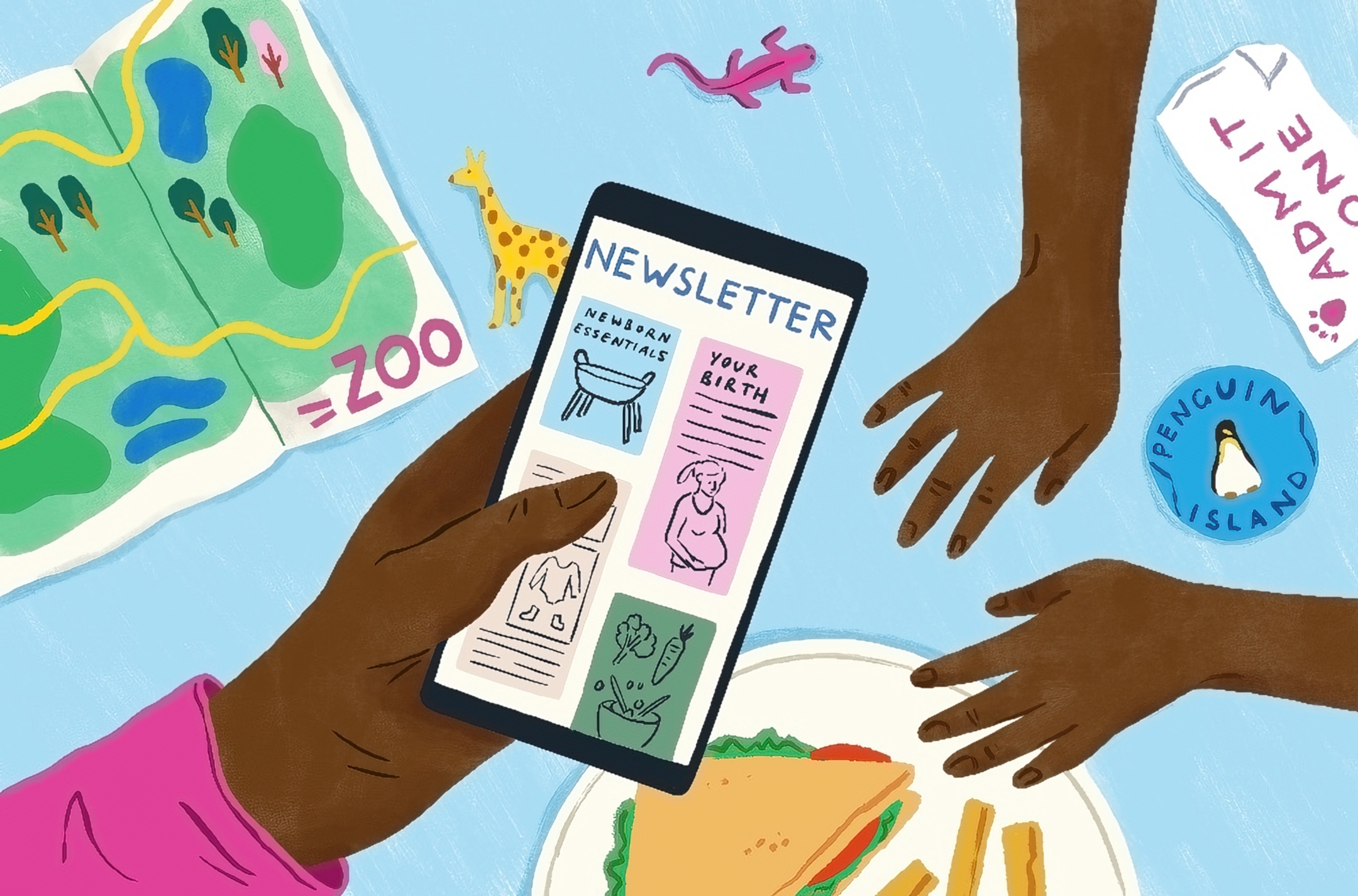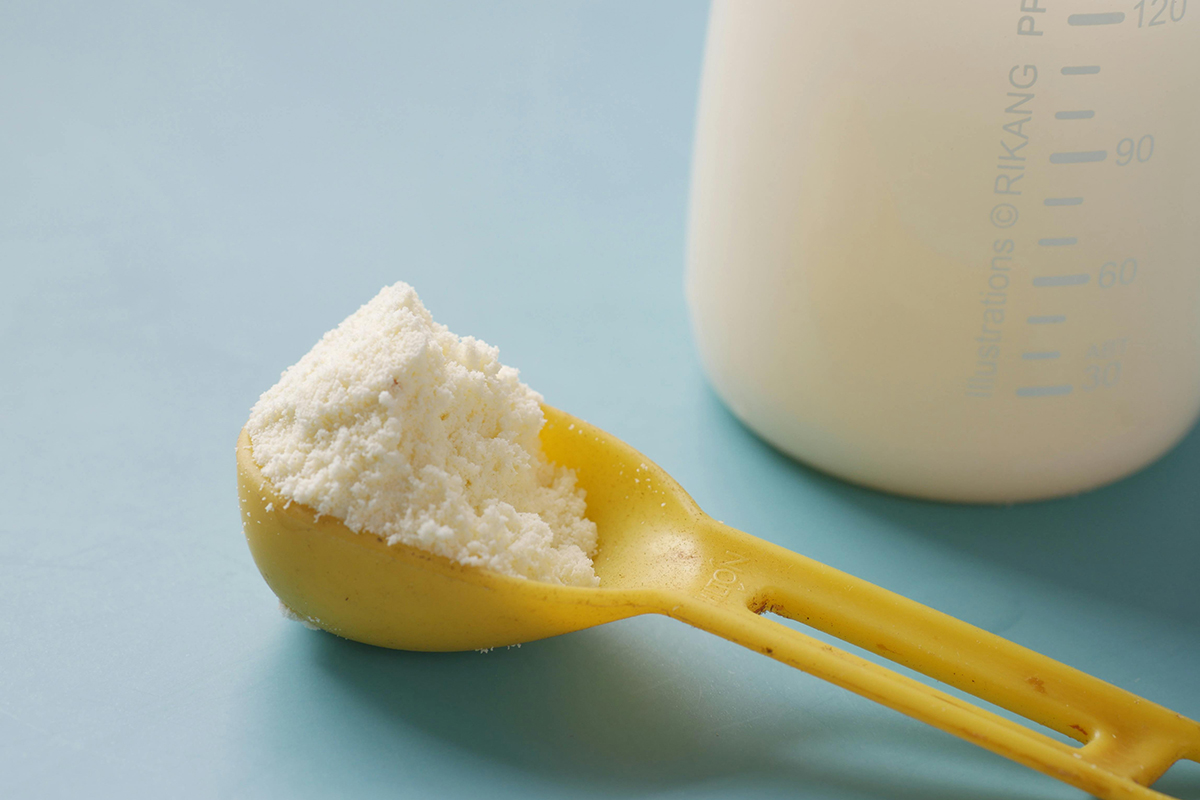One of my core beliefs is that data is key to making our parenting decisions effectively. Often, however, data is most useful to answer the big questions but falls flat on the details. In many of these cases, the lack of data mostly reflects the fact that it doesn’t matter very much what you do on these details.
That argument is simultaneously freeing and frustrating. It’s reassuring to know that you probably will not mess up too badly. But for some of us, it is paralyzing to try to move forward without a plan.
I would argue that perhaps nowhere is this more the case than in the introduction of solid foods. Data gives us a few hints as to dos and don’ts, but virtually nothing on the how. Yet it is the how that is daunting. The first food we gave my daughter was rice cereal. I remember giving her some, taking a few pictures, and noting the milestone. And then slowly realizing that, like, we were supposed to do this all the time now? How was that even going to work?
Below, I’ll start with the (limited) data-based guidance on starting infants on solids and then offer some perspective — and some resources — for making a plan when the data isn’t going to make it for you.

Basic guidelines for solid food introduction
Ultimately, starting solid foods is going to involve making a plan that works for your family, and there is a lot of flexibility there. But it is useful to keep in mind the small number of guidelines that are supported by the data and should be part of whatever plan you come up with.
- Know the signs for when to start. Babies are ready for solid food when they can hold their head up, sit with support, and start moving their hands toward their mouth. This typically happens between 4 and 6 months, and will vary across babies. Solid food shouldn’t be started before 4 months.
- Breast milk and formula are still important. Before about 12 months, babies will still get most of their calories through breast milk or formula. The saying “food before one is just for fun” captures this idea, even if it is an oversimplification (some babies do eat more solid foods earlier).
- Introduce allergens early. Things like peanuts, eggs, dairy, and wheat should be introduced by 6 months at least. Early allergen introduction has been reliably shown to lower the risk of developing long-term allergies. These foods shouldn’t just be introduced early; they need to be eaten with some frequency.
- Early foods should have iron in them. Babies at this age begin to need more iron than is in breast milk or formula; many cereals are fortified with iron for this reason, and meat also provides a lot.
- Avoid serving babies choking hazards. No hard candies, nuts, unpeeled grapes, or giant pieces of hot dog.
- Limit sugar intake (within reason). Excessive sugar consumption in the first years of life can contribute to later health issues. This definitely doesn’t mean no sugar, but it’s one thing to be a little cautious about.
- If they don’t like something, keep trying. Tastes are formed by repeated exposure to flavors early on (there is a fascinating study about a taste for carrots being formed by carrot-juice-drinking moms through breast milk, for example). This means that exposing kids to the same foods over and over, even if they do not like them the first time, is a good idea.
Many parents get advice about starting solids that goes beyond these simple guidelines, advice that suggests one approach or another is better. What does the data say about many of those claims?
How important are the types of food you start with?
Introducing new foods to a baby can be quite fun; they are often much more receptive to new flavors than older children. But the order that you do these in, it really doesn’t matter. Babies do not have many teeth, so it is a good idea to introduce softer foods first. But beyond that, it’s really up to you (and it doesn’t matter if you start with fruits or vegetables).
There is also talk about early food choices contributing to picky eating. Picky eating is a tricky problem for many families, and there are some data-oriented approaches to addressing it, but any measured impact of early food introduction on this behavior is extremely limited.
You’ll hear that rice cereal is the “perfect” first food or that oatmeal is. The reality is that across the globe, there is an enormous variation in what “first foods” are, and no reason to say one is better than another. Good baby food marketing is probably responsible for the rice cereal recommendation, for example. And, in general, there is an element of cultural randomness in what is considered the ideal first food.
There’s also no strong evidence to support the prohibition on using salt in infant food (in moderation, obviously). And this idea that you need to introduce only one food every three days? That’s more tradition than data-based logic. While it’s true that early on it’s useful to pay attention to new foods in case your child has a reaction, you can do that with a much faster food introduction schedule.
What about baby-led weaning?
Baby-led weaning is an increasingly popular way to start your solids. The basic idea: instead of introducing pureed foods and feeding the kid with a spoon, you wait until they are old enough to pick up food on their own, and then have them more or less eat what your family eats.
This approach is appealing to some people (me, with kid number two) because it feels easier. I was already making food for the rest of the family, so why not just throw some on the baby’s tray? With my first child, I had a literal closet full of puree jars, and I could not bear to revisit it.
Messaging about baby-led weaning does not typically focus on the lazy-parenting benefits. Instead, people hear about how this approach is better for babies. Claims like: infants learn to regulate the amount of food they eat, leading to less incidence of overweight or obesity; they show acceptance of a wide variety of foods; and you have better family mealtime experiences.
Evidence backing these claims is limited. A main issue is that the kind of parents who are likely to try this differ from those who use a more traditional feeding structure. They tend to be higher income, better educated, more likely to sit and actually have family meals, etc. These factors also relate to mealtime experience and diet quality, making it hard to separate out the role of the food introduction system.
There is one (small) randomized trial of 200 women. The results support some of the claims about baby-led weaning, but not all. Parents reported less food fussiness, and the infants in the baby-led-weaning group were more likely to eat with their family. They were also likely to be breastfed longer, and the introduction of food was pushed later (i.e., to around 6 months rather than 4).
On the other hand, this study did not find any differences in whether children were overweight or obese by the age of 2, and they didn’t find any differences in the nutrients the children consumed or their total calorie intake. The researchers noted that this was hard to measure, given the smearing around of food. The kids did eat slightly differently — the baby-led-weaning group was more likely to have meat and salt, for example — but these differences didn’t go in any systematic direction. On the reassuring side, researchers found no evidence of an increased risk of choking (more on that below).
This study followed 200 people; clearly, learning detailed answers to these questions would require a lot more than that. A second randomized trial used a similar sample size and reached the same set of conclusions. There was very little difference in any measured outcomes later in childhood.
In the end, baby-led weaning can be a great option for many people (it worked well for us), but it isn’t something parents should feel pressured into due to better child outcomes.
How worried should you be about choking?
Regardless of the method of introducing foods, many parents worry about choking.
A first thing to say: there is an important distinction between gagging and choking. Many babies, as they learn to eat foods — whether it is purees or solid foods — will gag. This can appear to parents to be choking, but it is not. The experience of learning to swallow is a challenging one. It takes practice, but gagging is not dangerous.
If you are anxious about this, I’d urge you to watch some videos of what normal infant gagging looks like. They aren’t the most entertaining videos on the internet, but they can really dial down parental anxiety when you see this happen with your own child.
That being said, choking does happen with children, and it is a common source of emergency room visits.
A 2013 paper in the journal Pediatrics looks at pediatric emergency room visits for non-fatal choking on food and asks which foods were responsible. Forty percent of these visits are for children under the age of 1. The largest culprit food is candy: hard candy accounts for 15% of cases with a known cause, and other candy is another 13%. Next up is meat (not hot dogs) and bone.
There are some notable variations by age. Fruits and vegetables (grapes?) account for a larger share of choking for children 0 to 4, whereas meat and bone are more significant causes for older kids. Analyzing fatalities (which are very rare), the same culprits come up: hot dogs, candy, and grapes.
This argues for caution with certain foods for babies (grapes and hot dogs should be cut, and hard candy should be avoided), but, again, most foods are not significant choking risks.
Does the type of high chair matter?
There are many high chair options: chairs that attach to the table, chairs that are freestanding, chairs that are expensive, and chairs that are not. The main overall value of a high chair is it raises your child up to the level of the table, and it has a strap so you can keep them sitting down. There are many good high chair options, and a lot of this decision is probably driven by budget and aesthetic considerations about your dining room.
Some high chairs are very expensive, just like some furniture is very expensive. If you want to spend money to get a high chair that looks a particular way, super. From a functionality perspective, it is unnecessary.
One specific question many people have: Do you need a footrest? The main purported value of the footrest is the idea that kids will eat better, fidget less, etc, if they have someplace to rest their feet.
There is little to no support in the data for this claim. I can find only one study, which randomized 24 children across high chair types and evaluated their ability to focus on non-eating tasks and (using videos) their behavior at meals. The choice of high chair types was either a standard booster seat or one of these footrest high chairs. This study, which, to be clear, is small, finds no significant differences across high chair types in the outcome considered.
That doesn’t mean you shouldn’t get a footrest! But it also doesn’t mean you have to.
Make a solid plan for starting solids
Looking at what the data does and doesn’t tell us, it should be clear that the information we have would be consistent with a huge variety of approaches to the introduction of solid foods. You can adhere to the data with a traditional approach of starting with rice cereal and working your way through single-ingredient jarred baby foods. Or you could adhere to it through a full-on baby-led weaning approach. Or you could be somewhere in the middle. Or, like me, you could do it completely differently with the first and second child.
The question, though, is where to go from there — how to choose if the data doesn’t choose for you.
To do this, I would start by thinking about where you are trying to go. What do you want mealtimes for your child (and you) to look like at 9 or 10 months? Do you imagine eating meals all together? Do you imagine feeding your child separately? If you imagine eating together, do you imagine your child eating what’s on your plate (more or less)?
This doesn’t necessarily speak to the details of how to do this, but it is helpful to keep your focus. It can also force you to think about what feels comfortable and practical to you. Some approaches to food introduction are much messier than others. Personally, I embrace the mess (as my spouse will tell you). But this isn’t how everyone feels, and your own reaction is something to factor in.
Once you’ve got this big picture in mind, then you can make a plan. If thinking about the details of introducing foods makes your skin crawl with anxiety, the way out may be to recognize that any plan that adheres to the basic data-based principles will make you feel better.
I’m not talking about anything too elaborate. I’m thinking of — at most — a Google Sheet with the date, what they will eat that day, and maybe at what time. A little bit of tracking can help you remember which foods you’ve tried, keep allergens in the mix, and help you work towards (ultimately) the three-meal-two-snack place you are hoping to go with a toddler. I’m sure you can all do this much better than I would. And the point is not so much the way you implement, but the benefits of taking the time to make a concrete plan, which you can then execute with less stress and uncertainty.
If you want some help, especially if you are planning to do baby-led weaning, Solid Starts has a popular (free) food database to get started.
The upshot: No data doesn’t have to mean no plan. It just means you get to choose your own adventure. And whatever adventure you choose, it will end with oatmeal and bananas smeared around your house in a sticky, glue-like paste. Enjoy!
The bottom line
- There are a few guidelines for starting solid foods that are supported in the data; babies are ready for solid food when they can hold their head up and sit with support, generally around 6 months. Allergens should be introduced early and often, and early foods should have iron in them.
- Beyond that, many common recommendations lack strong data support, including the idea that there’s a “best” first food, baby-led weaning versus purees, salt restrictions, and the “one food every three days” rule.
- In reality, the evidence supports a wide range of approaches to starting solids, which means there’s plenty of room to make choices based on what works for your family.



















Log in
I love the Lil Mixins! Very easy for allergen introduction for things like walnuts or soy that we don’t eat or have on hand!
I have been putting off starting solids with baby #2 because of the lived experience similar to yours – it doesn’t end after the first rice cereal! We are finally getting ready to start (she’ll be 6 months on Friday) but I have one quick delay tactic…I mean question. In the body of the article you say they’re ready when they’re sitting WITH support but in the bottom line you say WITHOUT support. Should we wait to start until she can sit for the duration of a “meal” without support?